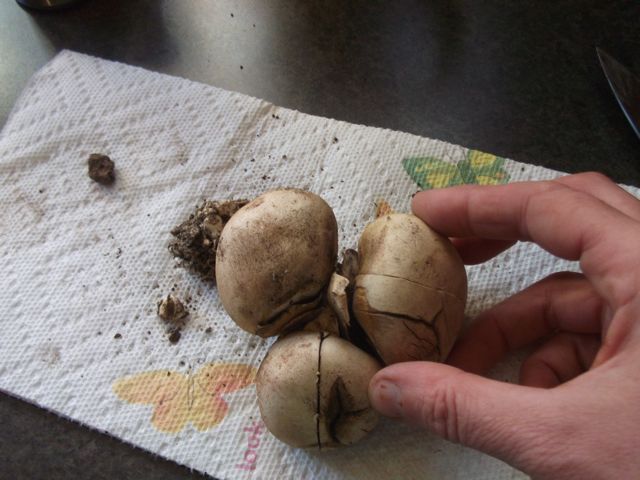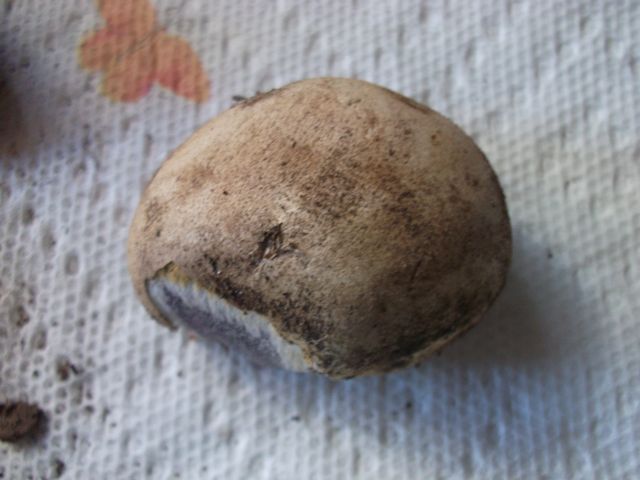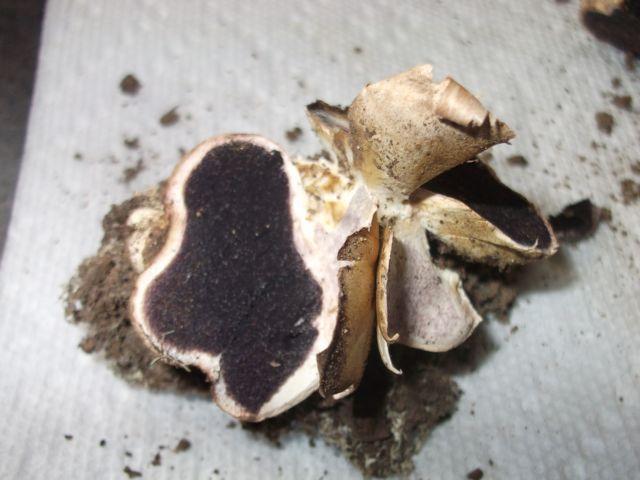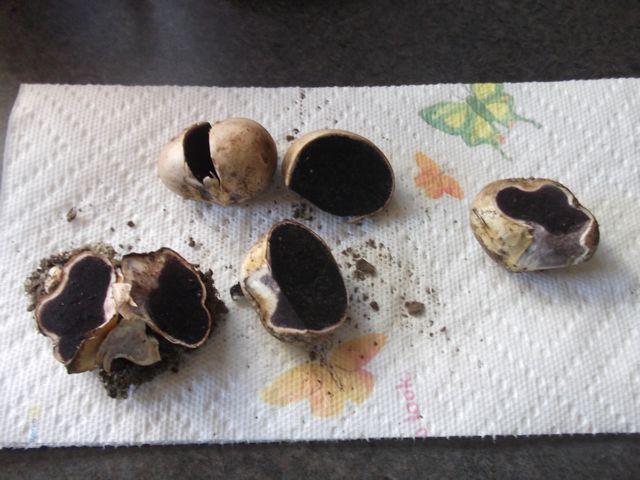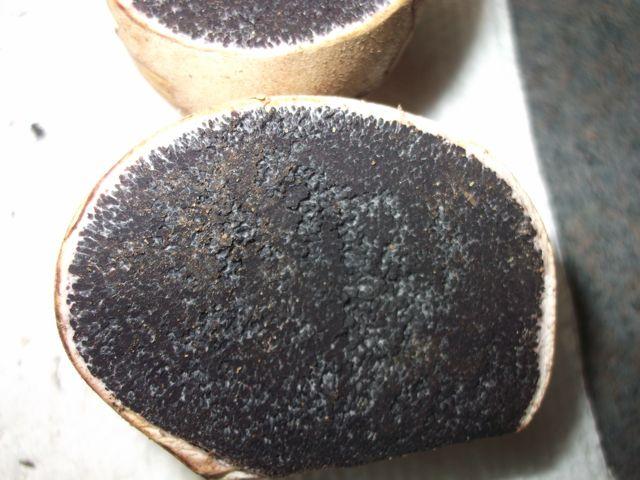Scleroderma
Posted by Godsavethecheese 10/8/12 - - - - - -- - Scroll Down to see the discussion
10/8/12
Gstc: A friend found this clump of stalked,
hard skinned puff-ball things growing in a raised garden bed.
They are a great blue-black color inside and they have a thick skin, 3-4mm thick.
I'm thinking it's maybe Scleroderma, but I don't know. I am attaching some pictures. Thanks.
Sava: I think you're right: This is Scleroderma cepa, or something very close to it.
I've seen it many times this year, but never put under the scope to see what its spores look like.
The kind of ornamentation of their spores seems to be a major feature
for identification of these "earthballs".
http://www.mushroomexpert.com/scleroderma.html
The text below is from the MykoWeb page for S. cepa.
(http://www.mykoweb.com/CAF/species/Scleroderma_cepa.html)
Gstc: Thanks.
I googled Scleroderma Cepa and the wikipage came up with this
"Scleroderma cepa is an ectomycorrhizal fungus used as a soil
inoculant in agriculture and horticulture."
The soil it was found growing in was from Portland's compost program
and my friend informed me that Portland inculcates the city's compost
with mycelium to help it break down.
Sava: Like other members of the genus *Scleroderma*, *S. cepa* has a thick, tough
peridium. This character along with a firm, dark-purple gleba that is never
soft, or semi-liquid, helps to separate it from members of the "true
puffballs," i.e. *Calvatia*, *Lycoperdon*, etc. The common name "earthball"
comes from the tendency of this and several other Sclerodermas to be only
partially erumpent. Many are found by troweling in areas where a single
fruiting body has been exposed. *Scleroderma cepa* is characterized by a
smooth, white peridium that becomes pinkish-brown, to ochraceous-brown,
dark brown where handled or in age. The surface is then often cracked or
areolate, but not with raised warts as is the case in *Scleroderma
citrinum* which can be further distinguished by reticulate rather than spiny spores.
